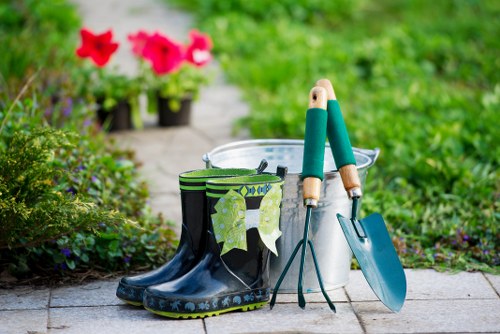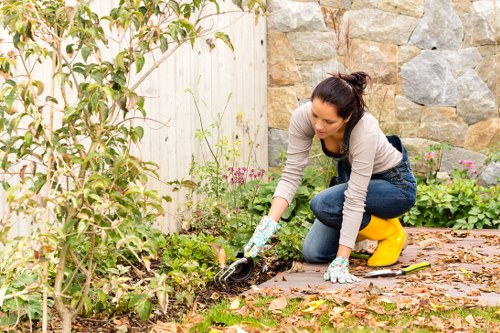Effective Driveway Algae Removal: Keep Your Pathway Pristine

Algae growth on driveways is a common issue that not only detracts from the appearance of your property but can also make surfaces slippery and hazardous. Driveway algae removal is essential to maintain both the aesthetic and safety aspects of your home. Understanding the causes of algae growth and the most effective removal techniques can help you keep your driveway looking immaculate year-round.
Algae thrive in moist, shaded environments, making driveways with limited sunlight and adequate moisture particularly susceptible. Regular maintenance and timely removal are key to preventing persistent algae buildup. Whether you prefer DIY methods or professional services, there are various strategies to tackle this problem effectively.
One of the first steps in algae removal is identifying the extent of the growth. Light algae may only discolor the surface, while heavier infestations can create slippery patches that pose safety risks. Assessing the severity will help determine the appropriate treatment method to use.
There are several methods for driveway algae removal, each with its own set of advantages. Natural solutions, such as vinegar or baking soda, offer eco-friendly alternatives to chemical cleaners. These substances can effectively eliminate algae without harming the surrounding environment.
Chemical treatments, on the other hand, provide more robust solutions for stubborn algae stains. Products containing bleach or commercial algaecides can deliver quick results, but it's important to use them cautiously to avoid damaging the driveway surface or harming vegetation nearby.
Pressure washing is another popular technique for removing algae. By using high-pressure water jets, you can physically dislodge and wash away algae from the driveway. This method is highly effective for large areas and can restore the driveway's original appearance with minimal effort.

Preventing algae growth is just as important as removing existing growth. Ensuring proper drainage around your driveway can reduce moisture accumulation, making the environment less conducive to algae proliferation. Trimming overhanging trees and shrubs can also increase sunlight exposure, further inhibiting algae development.
Regular cleaning and maintenance play a crucial role in keeping algae at bay. Sweeping away debris and leaves can minimize moisture retention and eliminate potential breeding grounds for algae. Incorporating these habits into your routine will contribute to a cleaner, safer driveway.
Sealing your driveway is another effective preventive measure. A high-quality sealant can provide a protective barrier against moisture and algae formation. Ensuring that the sealant is applied correctly and maintained over time will extend the lifespan of your driveway and keep it looking fresh.

For those who prefer professional assistance, hiring a driveway cleaning service can be a worthwhile investment. Experts have access to specialized equipment and cleaning agents that can handle severe algae infestations efficiently. They can also offer valuable advice on maintaining your driveway to prevent future growth.
Choosing the right professional service involves considering factors such as experience, reputation, and the range of services offered. Reading reviews and asking for recommendations can help you find a reliable provider who meets your specific needs.
Cost is another important consideration when opting for professional algae removal. While it may seem more expensive initially, the long-term benefits of a well-maintained driveway can outweigh the costs. Preventing damage and maintaining the property's value are essential aspects of this investment.

Long-term maintenance strategies are crucial for keeping your driveway free from algae. Regular inspections can help you identify and address potential issues before they become major problems. By staying proactive, you can ensure that your driveway remains clean and safe for everyday use.
Implementing a seasonal cleaning schedule tailored to your region's climate can also enhance the effectiveness of your algae removal efforts. In wetter climates, more frequent cleaning may be necessary, while drier areas might require less intensive maintenance.
Investing in quality cleaning tools and products can make your algae removal process more efficient. From durable brooms to effective cleaning agents, having the right equipment on hand ensures that you can tackle algae growth promptly and effectively.

In conclusion, driveway algae removal is an essential aspect of home maintenance that enhances both the visual appeal and safety of your property. By understanding the causes of algae growth and implementing effective removal and prevention strategies, you can keep your driveway looking pristine all year round.
Whether you choose DIY methods or seek professional help, the key to success lies in regular maintenance and proactive care. Embrace these practices to enjoy a clean, algae-free driveway that adds value and beauty to your home.


